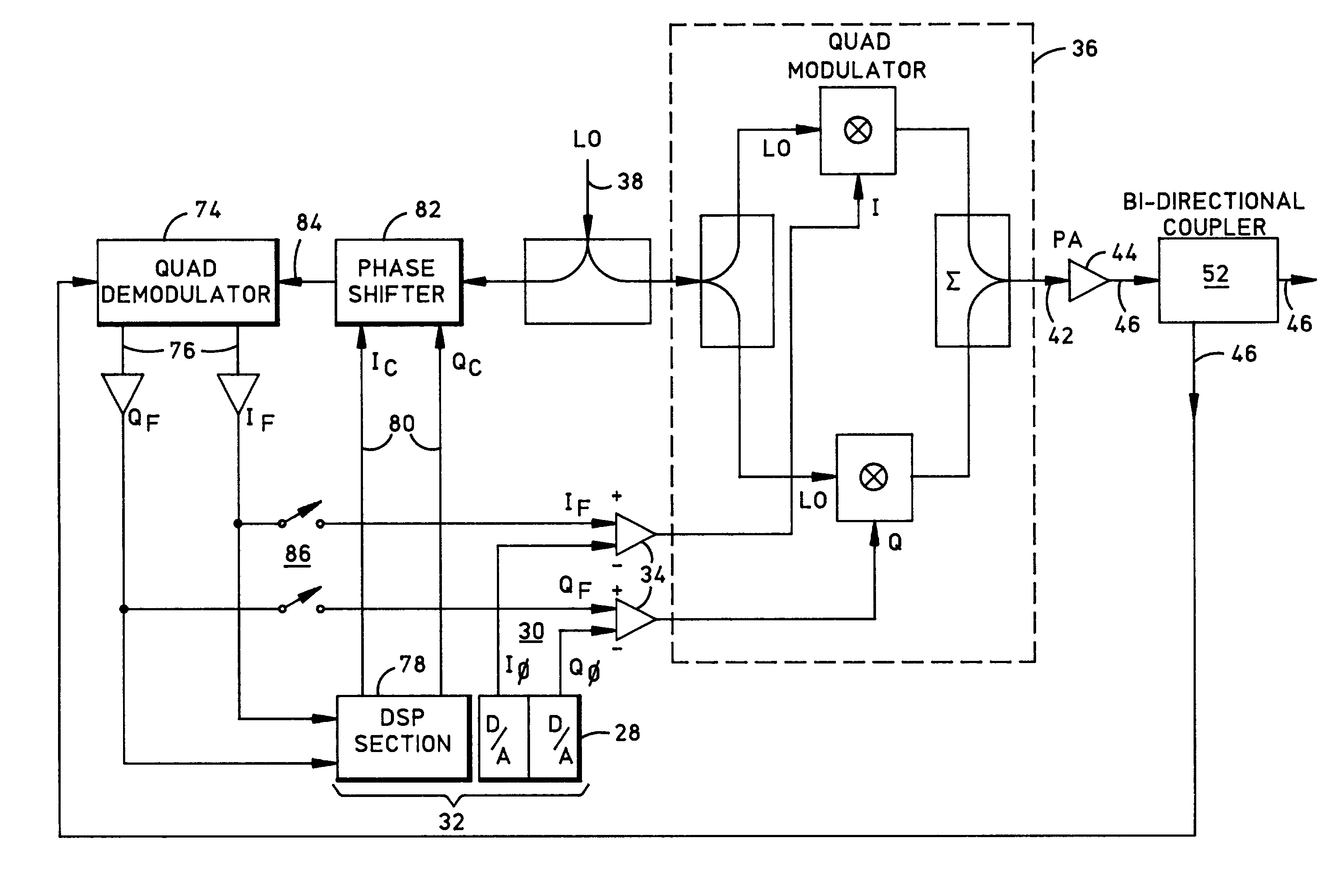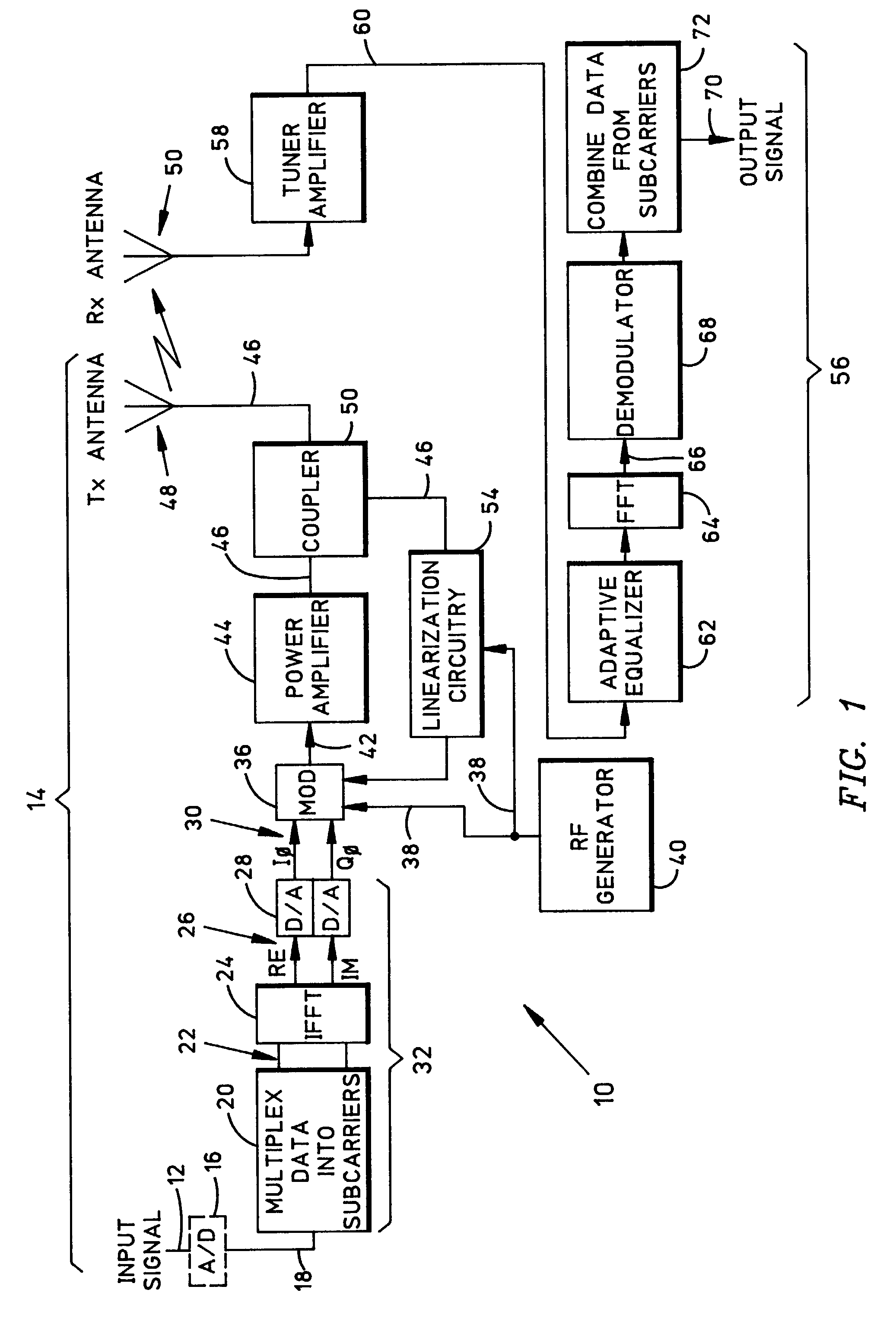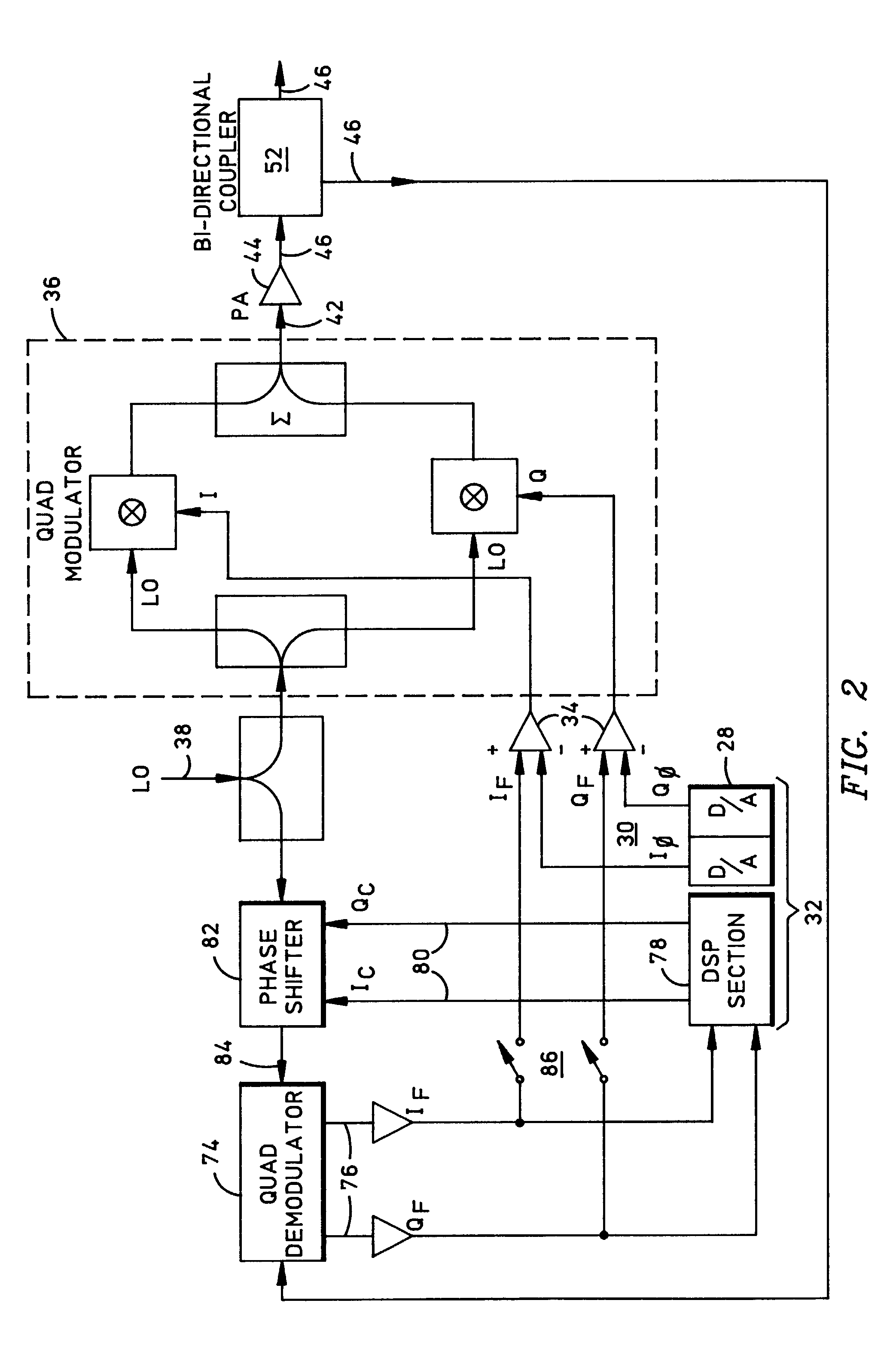Method and apparatus for transferring multiple symbol streams at low bit-error rates in a narrowband channel
a narrowband channel and stream transfer technology, applied in multi-frequency code systems, duplex signal operation, baseband system details, etc., can solve the problems of inability to recover data without error, uncertainty (blurring) of the symbol state at the receiver, and the nonlinear operation of the transmitter components of most systems known in the art, so as to improve the accuracy of discriminating adjacent symbol states and low bit error ra
- Summary
- Abstract
- Description
- Claims
- Application Information
AI Technical Summary
Benefits of technology
Problems solved by technology
Method used
Image
Examples
Embodiment Construction
[0033]FIG. 1 is a block diagram illustrating an exemplary embodiment 10 of the transceiver system of this invention. Although transceiver system 10 is illustrated as part of a narrowband wireless radio frequency (RF) communications system, the method and system of this invention are not so limited and may be advantageously applied to a variety of wireless and wired narrowband communication systems and in other frequency bands, such as, for example, satellite, cellular telephone, cordless telephone, cable telephony, radar, microwave, infrared and optical communication systems, without limitation. While this description is principally concerned with an exemplary narrowband digital transmission application, the system of this invention is equally applicable to communication through a high-resolution narrowband analog channel using one or more of the methods of this invention.
[0034]In FIG. 1, an incoming signal 12, which may be a digital data stream or an analog audio signal, is provide...
PUM
 Login to View More
Login to View More Abstract
Description
Claims
Application Information
 Login to View More
Login to View More - R&D
- Intellectual Property
- Life Sciences
- Materials
- Tech Scout
- Unparalleled Data Quality
- Higher Quality Content
- 60% Fewer Hallucinations
Browse by: Latest US Patents, China's latest patents, Technical Efficacy Thesaurus, Application Domain, Technology Topic, Popular Technical Reports.
© 2025 PatSnap. All rights reserved.Legal|Privacy policy|Modern Slavery Act Transparency Statement|Sitemap|About US| Contact US: help@patsnap.com



